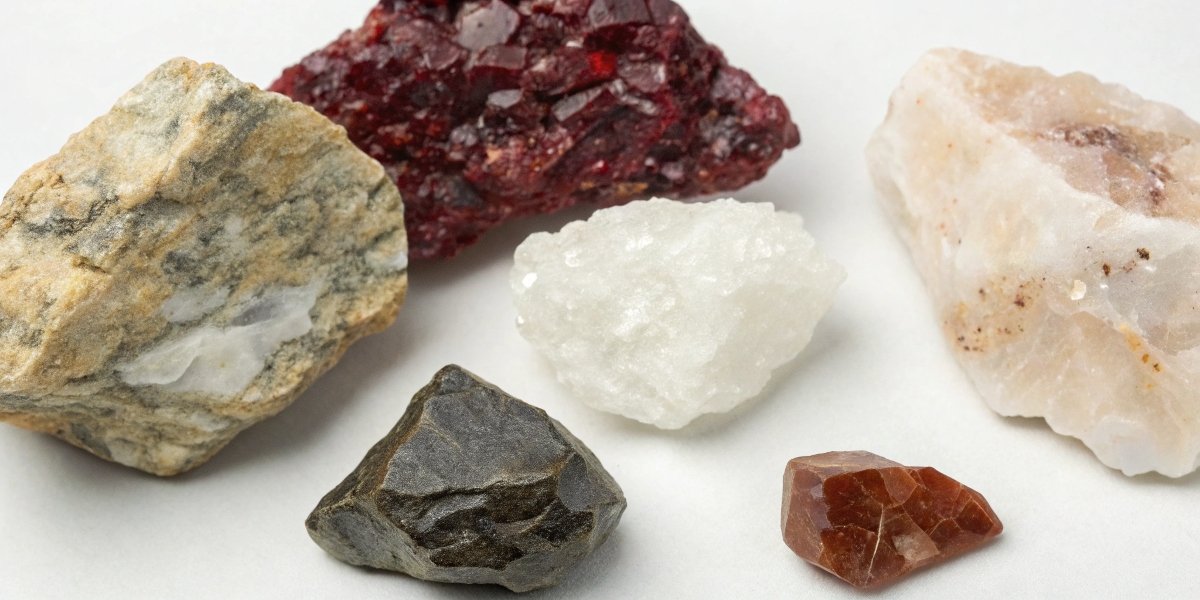
Are you struggling to choose the right abrasive for your job? Making the wrong choice can ruin your workpiece, costing you time and money. Understanding primary minerals makes the selection process simple.
The primary abrasive minerals include natural options like diamond and corundum, and synthetic ones like silicon carbide and cubic boron nitride (CBN). They are selected based on their hardness, toughness, and the material you need to grind, cut, or polish. Corundum and silicon carbide are the most common.
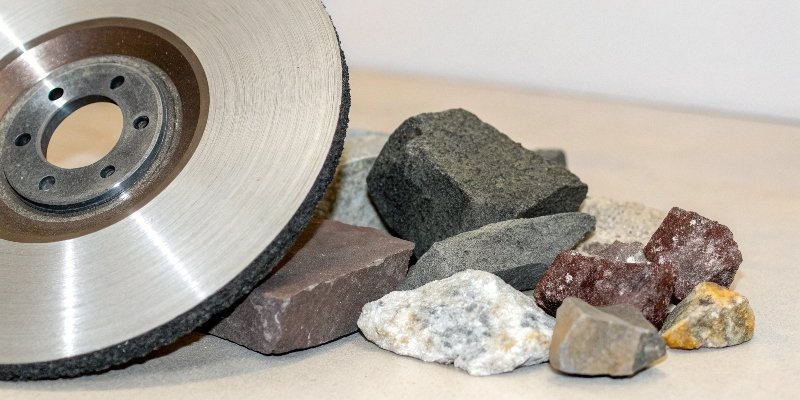
Choosing the right abrasive mineral can feel overwhelming. You see different colors, names, and codes. It’s a lot to take in. But at the core, it’s about matching the right mineral to your specific task. We’ve been working with these materials for nearly 30 years here in Henan Province, the heart of China’s abrasives industry. We can help you understand these materials better. Let’s break down the most important concepts, starting with the two main families of abrasives.
How are abrasive minerals classified as natural versus synthetic?
You see "natural" and "synthetic" on spec sheets, but what’s the real difference for your work? This confusion can lead to buying an abrasive that underperforms or costs too much.
Natural abrasives, like garnet or quartz, are mined directly from the earth. Synthetic abrasives, like the silicon carbide and white fused alumina we produce, are man-made. Manufacturing gives us precise control over purity and crystal structure, leading to more consistent and reliable performance.
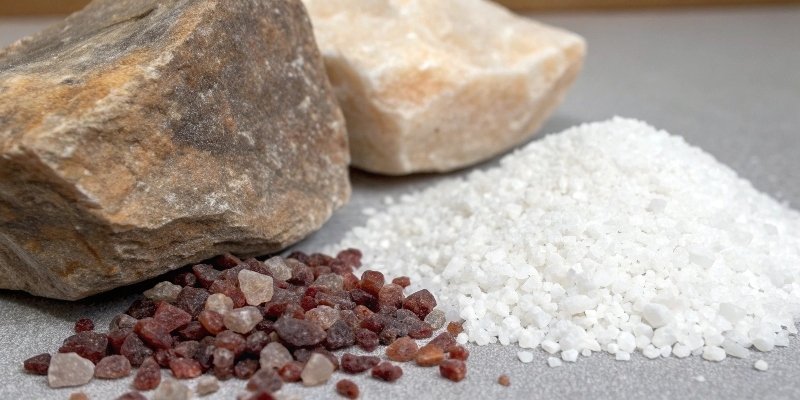
Understanding this distinction is the first step to becoming an expert buyer. Both types have their place in the industry, but their properties and best uses are quite different. As a manufacturer, we rely heavily on synthetic abrasives1 because we can guarantee their quality from batch to batch. This is critical for our customers who need repeatable results in high-precision manufacturing.
Natural Abrasives
Natural abrasives are materials that are simply mined, crushed, sorted, and sized. Their performance depends on the quality of the geological deposit they come from.
- Garnet: Often used for woodworking or waterjet cutting. It’s hard enough but fractures to create new sharp edges.
- Quartz: A common mineral, but its use as an abrasive is limited to less demanding jobs like sandblasting because it’s not as tough as other options.
- Natural Corundum (Emery): This contains corundum2 mixed with other minerals like iron oxides. It’s less pure and consistent than its synthetic cousin.
Synthetic Abrasives
Synthetic abrasives are made in furnaces under controlled conditions. This process allows us to create materials with specific properties.
- Aluminum Oxide (Corundum): We produce huge amounts of this. By controlling the process, we make brown aluminum oxide3 for toughness, white for purity and cool grinding, and other variations.
- Silicon Carbide: Created by heating silica sand and carbon to high temperatures. It’s harder than aluminum oxide but more brittle.
- Cubic Boron Nitride (CBN) & Synthetic Diamond: These are "superabrasives4" made under extreme pressure and heat, mimicking how they form in nature. This control makes them perfect for the toughest industrial jobs.
| Feature | Natural Abrasives | Synthetic Abrasives |
|---|---|---|
| Origin | Mined from the earth | Man-made in a factory |
| Purity | Variable, contains impurities | High and consistent |
| Performance | Can be unpredictable | Highly reliable and repeatable |
| Examples | Garnet, Quartz, Emery | Aluminum Oxide, Silicon Carbide, CBN |
| Our Focus | Limited Use | Our primary production focus |
How is the Mohs scale of hardness used to rank abrasive minerals?
You hear that a mineral has a "hardness of 9," but what does that really mean for your grinding wheel? Not understanding hardness can lead you to choose an abrasive that won’t even scratch your workpiece.
The Mohs scale ranks minerals from 1 (softest) to 10 (hardest) based on their ability to scratch each other. A harder mineral scratches a softer one. For example, corundum (9) can easily grind most steels, while diamond (10) is needed for harder materials like tungsten carbide.
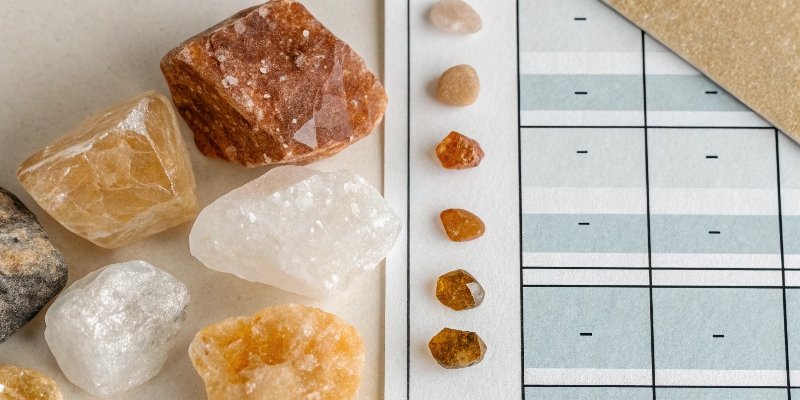
The Mohs scale is a simple but powerful tool for anyone in our industry. It was created by a German geologist, Friedrich Mohs, back in 1812. It’s not a scientific, absolute measurement of hardness; for that, you have scales like Vickers or Knoop. Instead, it’s a practical, relative scale. The basic rule of abrasives is straightforward: your abrasive must be harder than the material you are trying to shape or cut. I once had a client who was trying to grind hardened tool steel with a tool not much harder than the steel itself. The wheel just wore away instantly. After we switched him to one of our white aluminum oxide wheels, which has a Mohs hardness of 9, the problem was solved.
Ranking Abrasives by Hardness
Here is how the most common abrasive minerals stack up on the scale. Remember, the gap between numbers isn’t equal. The jump from 9 (corundum) to 10 (diamond) is much larger than the jump from 8 to 9.
| Mineral | Mohs Hardness | Primary Use |
|---|---|---|
| Talc | 1 | (Reference Softest) |
| Quartz | 7 | Sandblasting, some woodworking |
| Garnet | 7.5 – 8.5 | Wood finishing, waterjet cutting |
| Corundum (Al₂O₃) | 9 | Grinding steel and other metals |
| Silicon Carbide (SiC) | 9 – 9.5 | Grinding cast iron, ceramics, stone |
| CBN | ~9.5-10 | Grinding hardened ferrous metals |
| Diamond | 10 | Grinding carbide, glass, ceramics |
Knowing this hierarchy is key. It helps you quickly narrow down your options and avoid costly mistakes.
Which abrasive minerals are commonly used in sandpaper and grinding wheels?
Walking down an aisle, you see rows of sandpaper and grinding wheels that all look similar. Using the wrong one can damage your material or wear out the tool almost instantly, wasting money.
The most common abrasive in both sandpaper and grinding wheels is aluminum oxide (corundum), perfect for metalworking. For non-metals like stone, glass, or ceramics, silicon carbide is the preferred choice. These two minerals cover the vast majority of industrial applications.
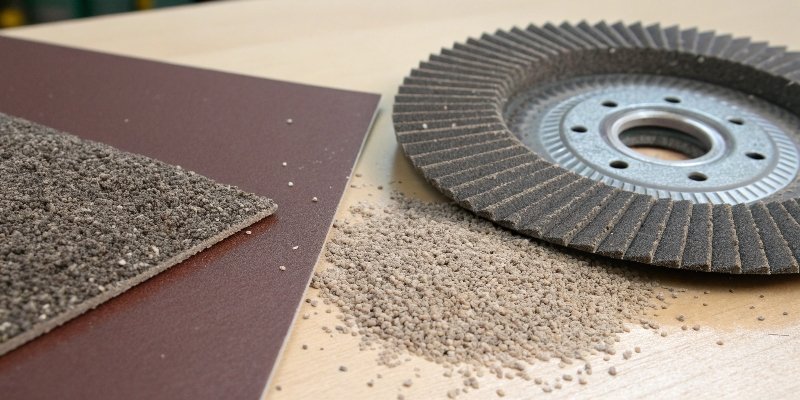
As a factory that produces grinding tools, we work with these minerals every single day. The choice of mineral is the most important decision we make when designing a new product for a customer. It defines what the tool can do, how long it will last, and how it will perform. While there are many specialty minerals, aluminum oxide and silicon carbide5 are the true workhorses of the industry. We produce a massive tonnage of both because they are so versatile and effective for our B2B customers in manufacturing.
Abrasives in Grinding Wheels
When you buy a grinding wheel, you are mostly buying one of these minerals bonded together.
- Aluminum Oxide (Corundum): This is the go-to for grinding steels and other ferrous alloys. We make brown aluminum oxide for its toughness in general-purpose grinding and white aluminum oxide for its high purity, which allows for cooler grinding on heat-sensitive tool steels.
- Silicon Carbide: This mineral is harder but more brittle than aluminum oxide. Its sharp, splintery fracture makes it ideal for grinding hard, brittle materials like cast iron, aluminum, brass, stone, and ceramics.
- Superabrasives (Diamond & CBN): These are used for wheels that need to grind extremely hard materials, like tungsten carbide or aerospace alloys.
Abrasives on Sandpaper (Coated Abrasives)
The same minerals are glued to a paper or cloth backing to make sandpaper6.
- Aluminum Oxide: The most common abrasive for sanding both wood and metal. It’s durable and provides a consistent finish.
- Silicon Carbide: Often used with water for "wet sanding" on plastics, paints, and metal finishes because it provides a very fine, sharp cut.
- Garnet: A traditional choice for finishing wood. It wears faster than synthetics but gives a very smooth surface.
What distinguishes industrial diamond and corundum as top-tier abrasives?
You need the best performance for your toughest jobs. Standard abrasives can’t handle superhard materials, causing downtime and defects that hurt your bottom line. Diamond and corundum offer unmatched capabilities for these tasks.
Diamond, the hardest material on Earth, is the ultimate "superabrasive" for cutting and grinding non-ferrous, ultra-hard materials like concrete or carbide. Corundum (aluminum oxide) combines excellent hardness with toughness and cost-effectiveness, making it the most versatile, top-tier abrasive for nearly all metalworking applications.
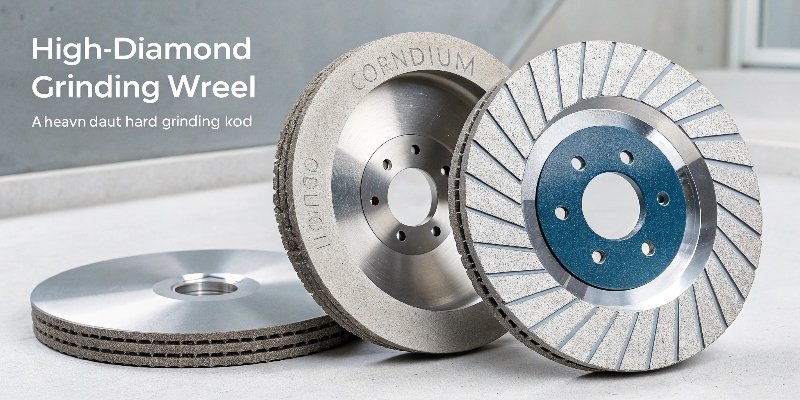
Here in Henan, we are at the center of China’s abrasive supply chain. In fact, 80% of the nation’s industrial diamond7 supply originates from our province. At our factory, we transform both diamond and corundum into high-performance tools. While they are both at the top of the abrasive world, they serve very different markets. Choosing between them is a critical decision based on your material and your budget. They are not interchangeable; they are specialists for high-demand applications.
The Unmatched Power of Industrial Diamond
When hardness is all that matters, diamond is the answer.
- Hardness: At 10 on the Mohs scale, it can cut or grind anything softer.
- Best Use: It excels at machining very hard and abrasive non-ferrous materials. This includes tungsten carbide, advanced ceramics, glass, stone, and concrete.
- Limitation: Diamond is carbon-based, so it reacts chemically with ferrous metals (iron, steel) at high grinding temperatures. This is why we use our CBN tools for hardened steel. Most industrial diamond is synthetic, allowing us to create crystals perfectly sized for specific jobs, from saw blades to precision grinding wheels.
The Versatile Dominance of Corundum
Corundum, or aluminum oxide, is the most important industrial abrasive in the world.
- Hardness & Toughness: With a Mohs hardness of 9, it’s extremely hard. But its real advantage is its toughness, which is its ability to resist fracturing under pressure.
- Best Use: This combination makes it the perfect abrasive for shaping, cutting, and finishing almost all types of steel and other metal alloys.
- Versatility: We produce different types—like brown, white, and chrome corundum—each tailored for different metals and applications, from rough grinding to precision finishing. It delivers outstanding performance at an excellent price point.
| Abrasive | Mohs Hardness | Key Strength | Ideal For |
|---|---|---|---|
| Industrial Diamond | 10 | Ultimate Hardness | Carbide, Ceramics, Stone, Glass |
| Corundum (Al₂O₃) | 9 | Hardness + Toughness | All Steels, Metal Alloys |
Conclusion
Understanding primary abrasive minerals is key to choosing the right tool. Knowing their classification, hardness, and best uses helps you make smarter, more cost-effective purchasing decisions for your manufacturing needs.
-
Discover the manufacturing process of synthetic abrasives and their advantages over natural ones. ↩
-
Understand the importance of corundum in the abrasive industry and its various forms. ↩
-
Find out why aluminum oxide is a popular choice in abrasives and its various industrial applications. ↩
-
Explore the world of superabrasives like diamond and CBN and their critical roles in industry. ↩
-
Explore the uses of silicon carbide in different industries and its advantages as an abrasive. ↩
-
Understand the different abrasives used in sandpaper and their specific applications. ↩
-
Learn about the unique properties of industrial diamond and its applications in tough jobs. ↩
Written by
leeon
You may also be interested in:
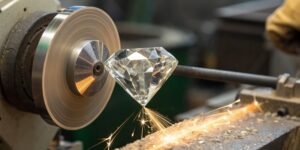
Why is a diamond used as an abrasive?
Struggling to cut tough materials effectively? Your current tools wear out too fast, causing delays and poor finishes. Diamond’s unmatched hardness offers the ultimate solution

What belt grinder should a (beginner) knife maker own?
Starting knife making is exciting, but choosing the right grinder is overwhelming. The wrong one ruins projects and wastes money. This guide simplifies picking the
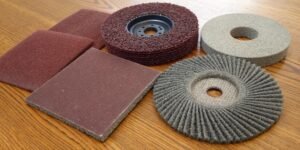
What are abrasives?
Choosing the wrong abrasive leads to poor results and wasted material. This hurts your production timeline and bottom line. Understanding abrasives is the simple solution
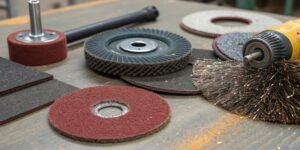
What are the uses of abrasives? What are some examples?
Struggling with tough materials? The wrong abrasive tool can ruin your project and waste money. Abrasives offer the power to shape, finish, and polish almost
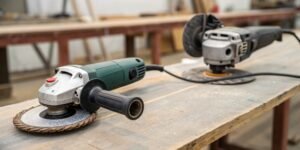
Is a corded angle grinder better than a cordless one?
Struggling between consistent power and job site freedom? Choosing the right angle grinder is a critical decision that directly affects your team’s efficiency, safety, and

What is the history of the wire wheel?
Are you curious about the origins of the simple wire wheel? Its fascinating history is deeply connected to incredible innovations in transportation and has shaped
